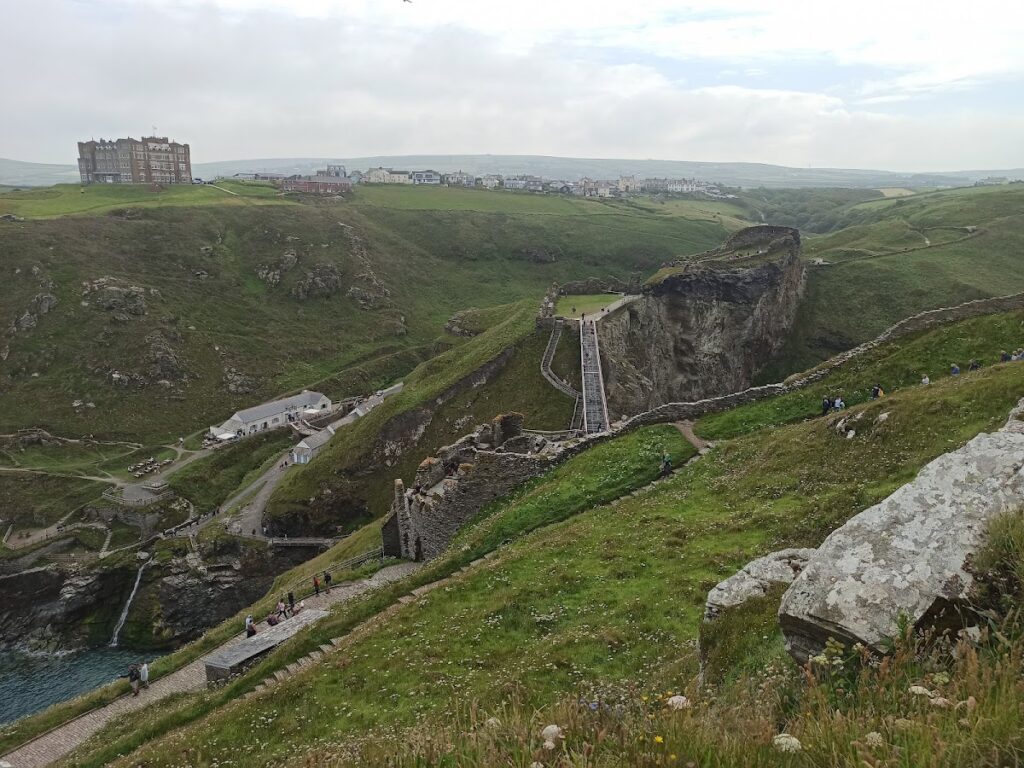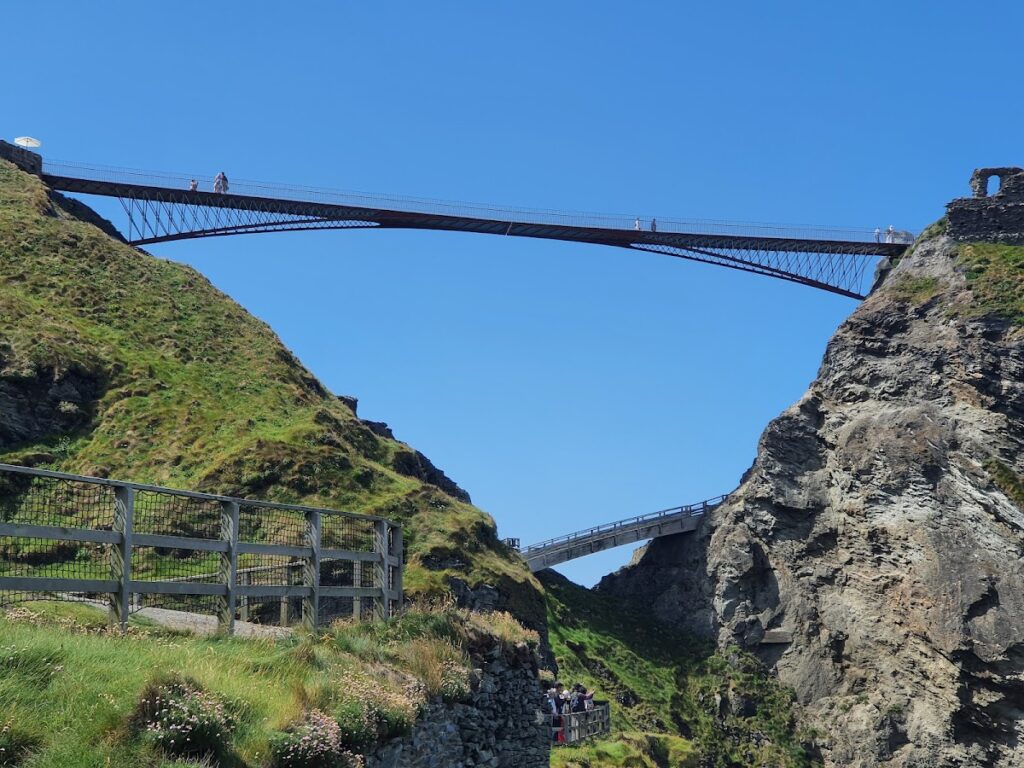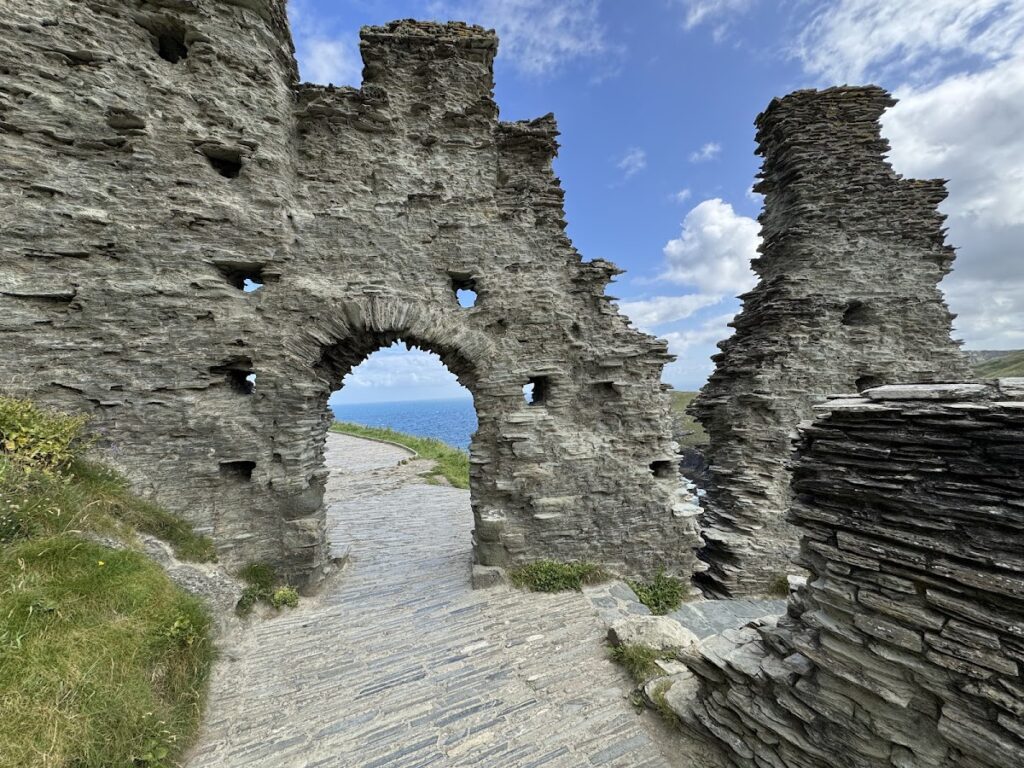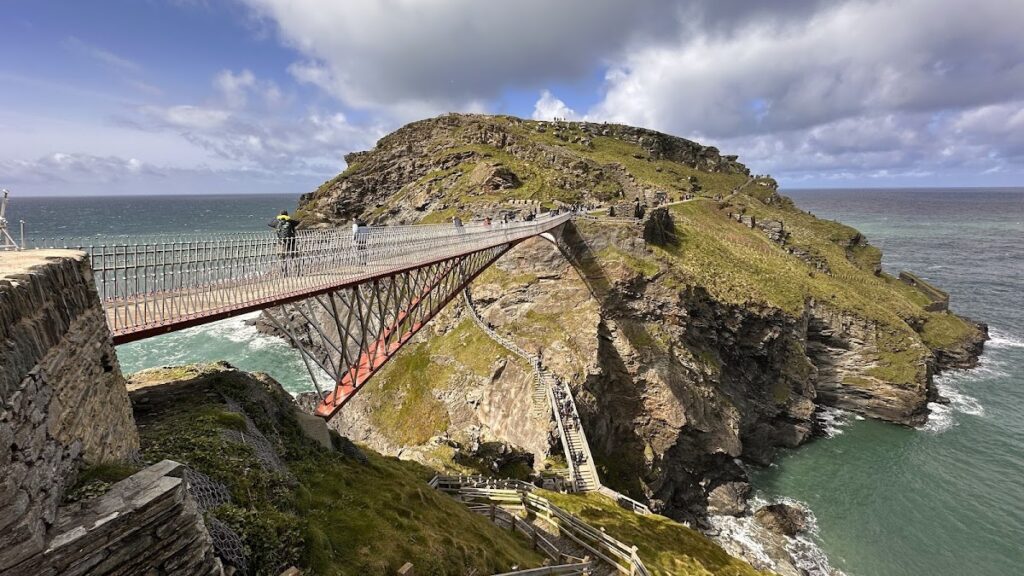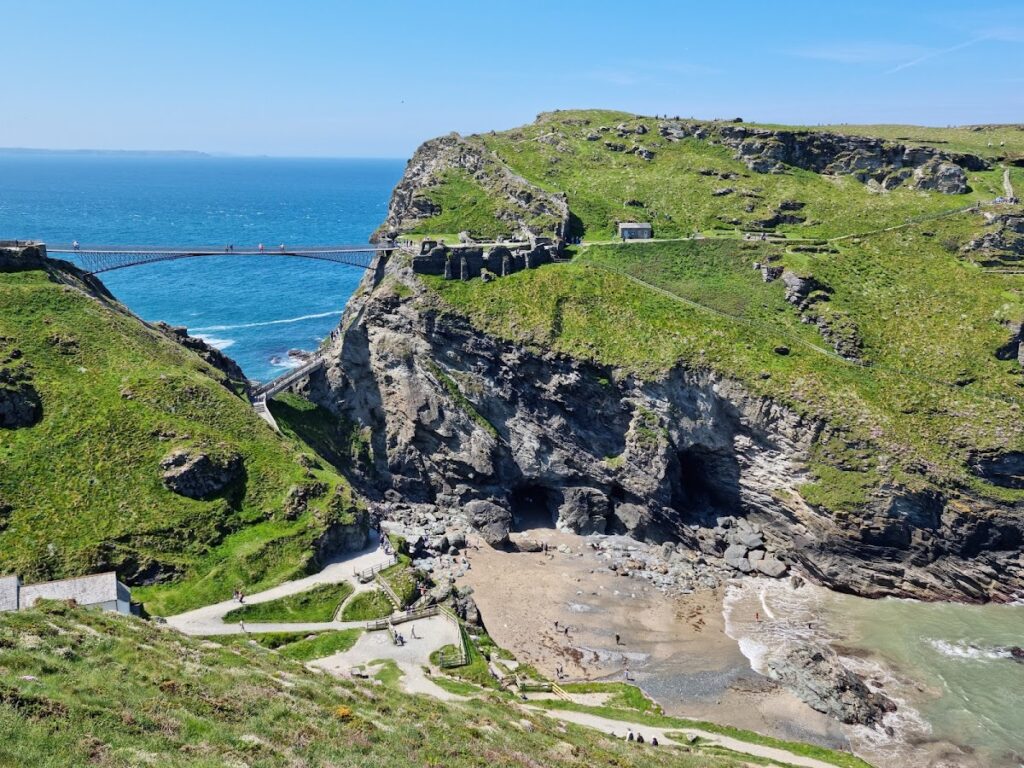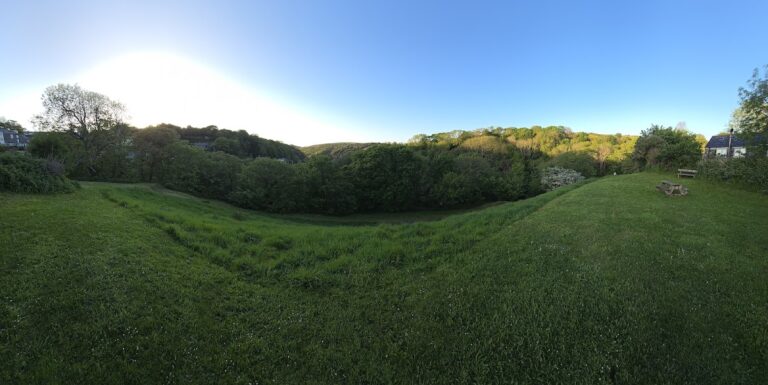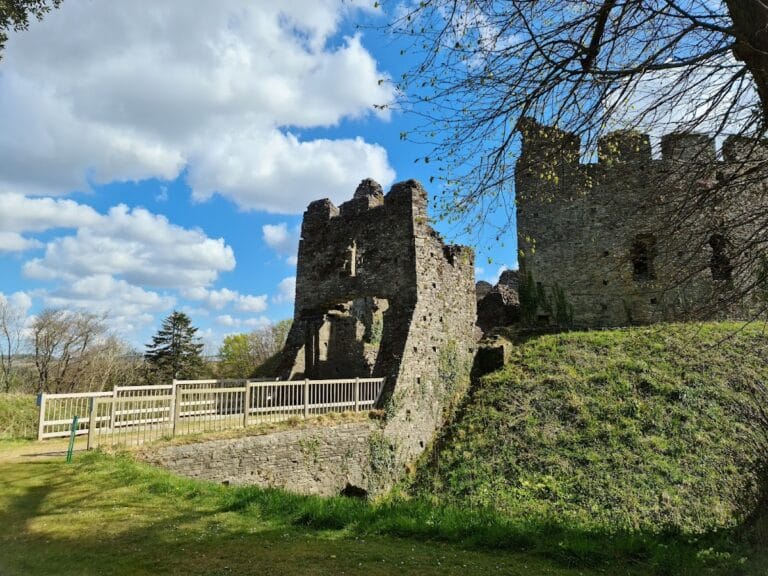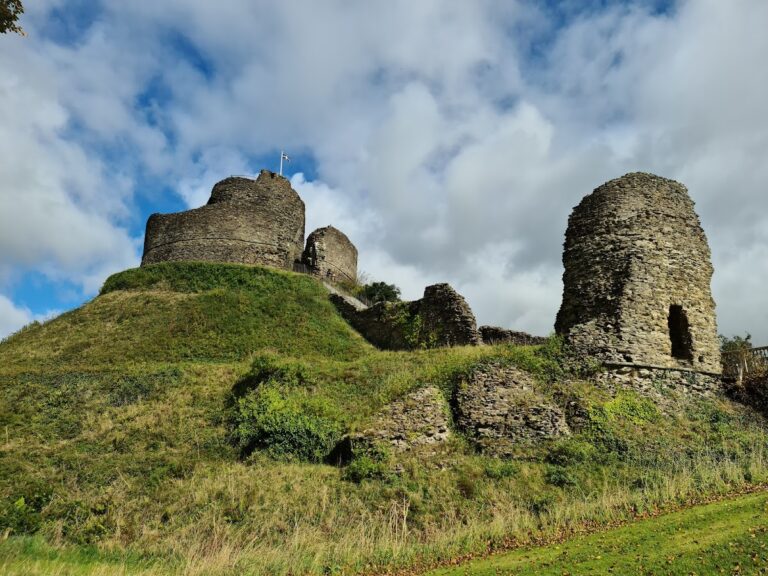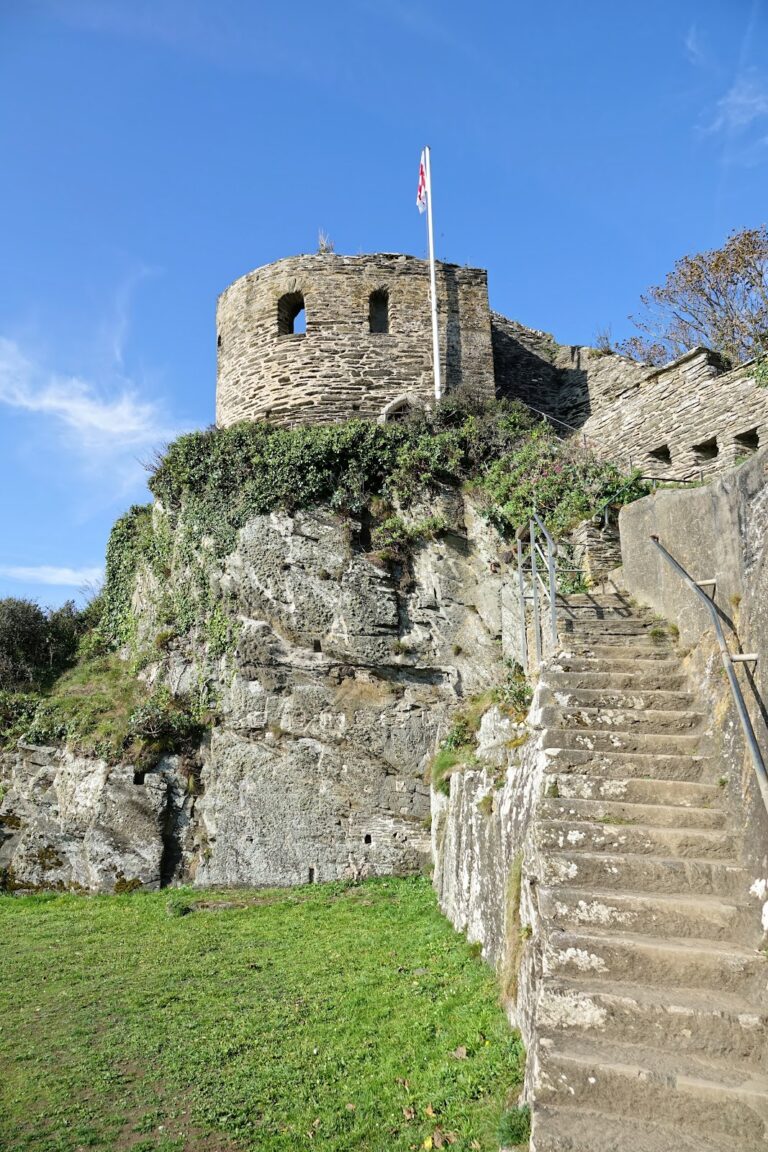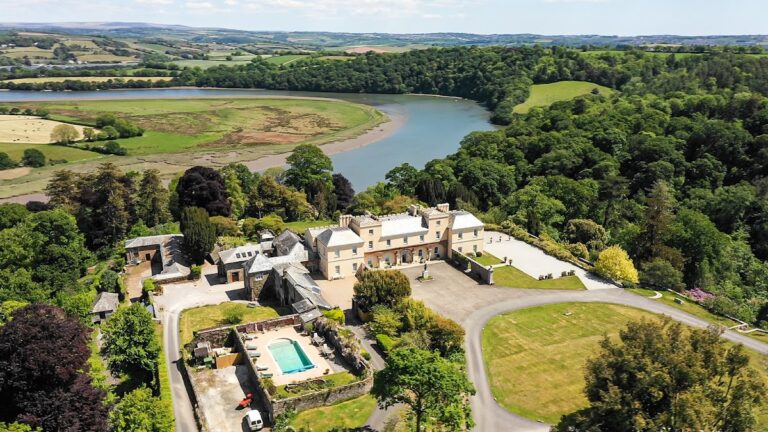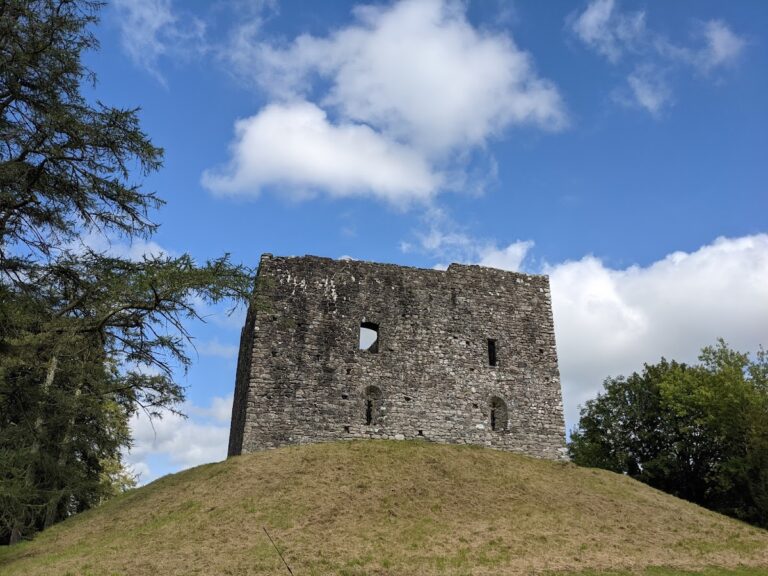Tintagel Castle: A Historic Early Medieval Site in the United Kingdom
Visitor Information
Google Rating: 4.6
Popularity: High
Google Maps: View on Google Maps
Official Website: www.english-heritage.org.uk
Country: United Kingdom
Civilization: Unclassified
Remains: Military
History
Tintagel Castle is situated near the village of Tintagel in the United Kingdom. Its origins trace back to the early medieval period, although the area shows signs of occupation even earlier. Evidence from artefacts reveals activity during the Romano-British era, the period when Roman influence still reached parts of Britain, but no Roman-built structures have been identified on the site.
Following the decline of Roman control in Britain, the peninsula became a significant location during the early medieval centuries, roughly between the 5th and 8th centuries. At this time, it is believed to have served as a seasonal residence for the kings of Dumnonia, a kingdom established in southwest Britain after Rome’s departure. This period reflects Tintagel’s role as an elite settlement, with archaeological finds indicating wealthy inhabitants engaged in wide-reaching trade.
The name Tintagel entered the wider historical imagination in the 12th century through Geoffrey of Monmouth, who linked the site to the legends of King Arthur. According to Geoffrey, Tintagel was where Arthur was conceived, through enchantment by the wizard Merlin. This association has become a defining aspect of the castle’s identity, intertwining history with myth.
In the 13th century, specifically in 1233, Richard, 1st Earl of Cornwall, erected a castle at Tintagel. He deliberately employed a style that appeared ancient to connect the site with Arthurian legend and the historic power of Cornish kings. Over the centuries that followed, the castle gradually fell into ruin. Some parts were repurposed, including use as a prison, and sections of land were rented for grazing.
Interest in Tintagel’s past led to archaeological excavations beginning in the 19th century. A major exploration in the 1930s, directed by Ralegh Radford, initially suggested the site housed a monastery. This interpretation was later replaced with the understanding that Tintagel was an elite royal complex. More recent digs in 2016 and 2017 unveiled remains of a substantial palace dating to the 5th or early 6th century. These excavations also uncovered imported luxury items and inscribed slates, attesting to the high-status occupants and their literacy during the early medieval period.
Today, while the castle’s medieval ruins mark its later history, the site’s importance stretches back through centuries as a royal residence and a place deeply woven into British legend.
Remains
Tintagel Castle’s remains extend across a peninsula known as Tintagel Island and the adjacent mainland, connected by a narrow strip of land. The overall layout reveals substantial stone constructions with refined features such as slate flooring and steps, characteristic of high-status buildings from the 5th and 6th centuries. These structures are interpreted as part of an early medieval palace serving the regional rulers.
Among the finds are imported pottery and glassware originating from the Mediterranean region. These include Phocaean red slip ware from what is now Turkey, amphorae likely from southern Turkey or Cyprus used for transporting wine or oil, and fine glass pieces from Spain. The presence of these goods indicates far-reaching trade links during the early medieval occupation.
The peninsula’s entrance was fortified during this period by a large defensive ditch, creating a restricted access path which further suggests a protected settlement. This early medieval fortification contrasts with later medieval additions but reflects the site’s strategic importance.
The castle constructed by Richard, Earl of Cornwall, in the 13th century introduced new elements visible in the ruins today. Notable among these are the remains of the Great Hall, which lost its roof in the 14th century, and several courtyard areas including a gatehouse on the mainland, one on the island, and an upper courtyard featuring living quarters and service buildings. Defensive features from this phase also include the Iron Gate, a fortified wall protecting access from the nearby cove.
Religious and cultural elements are present as well, such as a chapel and a walled garden believed to be part of Richard’s castle complex. The site also contains a natural sea cave called Merlin’s Cave, linked to the Arthurian stories associated with Tintagel.
Special excavations revealed the fragment of a slate window ledge dating to the 7th century inscribed with a blend of Latin, Greek, and Celtic letters and symbols. This evidence points to literacy and cultural connections spanning different linguistic traditions.
Additionally, a hollow sculpted into the rock, known as “King Arthur’s Footprint,” is thought to have been shaped by human hands. Historical interpretations suggest this feature may have served a ceremonial purpose, possibly connected to royal inauguration rites.
In modern times, artistic installations complement the ancient remains. These include a small carved face representing Merlin near the sea cave, a sculpture inspired by a compass symbolizing the Round Table, and a large bronze statue titled “Gallos” standing over two meters tall, which highlights Tintagel’s regal heritage.
